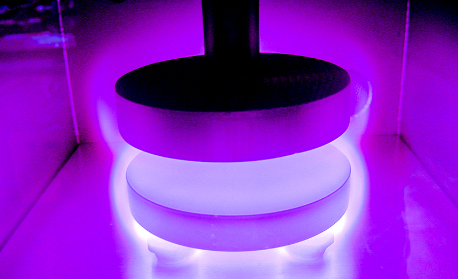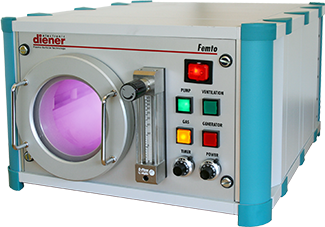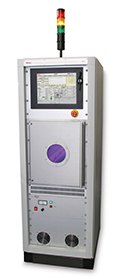Plasma Treatment Articles
Plasma Treatment
|
3 min read

While not as commonly referenced as liquids, solids, or gases, plasma is much more common in the universe. It causes the Northern Lights, powers solar winds, and makes up the inside of stars. Plasma processing technology like PECVD, plasma etching is vital for semiconductor manufacturing and nanotechnology. Semiconductors are becoming more common in electronics and material technologies, and due to this, plasma processing applications are also increasing. Similarly, nanotechnology research is also promising to provide value in both commercial and non-commercial industries.
Plasma processing technology is a continuously changing and growing field of research, and plasma processing equipment has increasingly been making its way into university laboratories. Companies that develop and supply plasma systems to universities provide students with real plasma technology experience that they might use in their future jobs. Manufacturers and new product development teams should become aware of the many research applications for plasma systems since they will influence and inform future product development and manufacturing advances.
 Plasma systems currently enable the change in the surface of materials that are used in manufacturing. These changes are made possible only by plasma treatment (either atmospheric plasma or low-pressure plasma) in many cases. Plasma-enabled surface modifications are made possible by synergistic mechanisms of varying energy depositing processes. These are initiated by ion bombardment of the surface, photon-initiated surface processes, and chemical reactions at the surface.
Plasma systems currently enable the change in the surface of materials that are used in manufacturing. These changes are made possible only by plasma treatment (either atmospheric plasma or low-pressure plasma) in many cases. Plasma-enabled surface modifications are made possible by synergistic mechanisms of varying energy depositing processes. These are initiated by ion bombardment of the surface, photon-initiated surface processes, and chemical reactions at the surface.
Through recent research, plasma treatment has become a popular way of activating the surface of materials like polypropylene and modifying it for several different products. Polypropylene has low surface energy, however, requiring it to be modified to enable it to be painted, coated, or bonded. That is where plasma systems have come in, and they are used for modifications like increasing the material wettability so that it can be used for various textiles. Manufacturers commonly use plasma systems for surface preparation to improve certain products' adhesions and bonding performance. They are easy to implement and provide reliable surface treatment results. That is why they have also become a favorite for universities to use to advance their students’ research.
Continuing research and developments in plasma processing will help to shape future devices, like DNA microarray chips, quantum computers, holographic memory, solar cells, and flexible displays. Plasma medicine (the use of low-temperature plasma (LTP) created by an electrical discharge) is also growing rapidly. The research and advancements in this industry have continued to prove their importance and show the need for further investigation into the healing of chronic wounds, cancer treatment, and more. As a direct result of the COVID-19 pandemic, LTP is now being used for the sterilization of PPE and ventilators. This one application highlights the importance of plasma technology in the healthcare industry and why there is such urgency placed on plasma research.
Research like this will keep pushing the boundaries of what is possible and keep plasma systems at the forefront of technology in many industries.
There are three broad categories that universities are generally exploring through plasma research. These are computer simulation, laboratory studies, and theoretical. However, research in plasma physics is even broader. Fusion sciences, fundamental physics of plasmas, astrophysics and space, laser-matter interactions, industrial processing, and beam and accelerator physics are all covered under the plasma physics banner.
Many universities are carrying out plasma research. Below are a few examples and what they are specifically working on:
 Drexel University's Nyheim Plasma Institute is working to build on recent achievements in applying plasma science to biology and medicine. They are working on plasma applications to kill microorganisms while sparing living mammalian tissues and more selectively. This is a plasma cleaning application.
Drexel University's Nyheim Plasma Institute is working to build on recent achievements in applying plasma science to biology and medicine. They are working on plasma applications to kill microorganisms while sparing living mammalian tissues and more selectively. This is a plasma cleaning application.
 Princeton Plasma Physics Laboratory is working on the science of nanoscale fabrication. Doing so can help create microscopic structures like carbon nanotubes, more robust than steel, to replace silicon in computer chips and improve performance. This is a plasma etching application.
Princeton Plasma Physics Laboratory is working on the science of nanoscale fabrication. Doing so can help create microscopic structures like carbon nanotubes, more robust than steel, to replace silicon in computer chips and improve performance. This is a plasma etching application.
 University of Illinois Urbana-Champaign Center for Plasma–Material Interactions is working on the study of plasma-material interactions relevant to semiconductors and plasma manufacturing through a combination of computational and experimental means. This is a plasma deposition and etching application.
University of Illinois Urbana-Champaign Center for Plasma–Material Interactions is working on the study of plasma-material interactions relevant to semiconductors and plasma manufacturing through a combination of computational and experimental means. This is a plasma deposition and etching application.
 Penn State’s College of Engineering, College of Agricultural Sciences, and College of Medicine say low-temperature plasma is an effective treatment against bacteria in liquid cultures, like blood. This is a plasma cleaning application.
Penn State’s College of Engineering, College of Agricultural Sciences, and College of Medicine say low-temperature plasma is an effective treatment against bacteria in liquid cultures, like blood. This is a plasma cleaning application.
 The Wyss Institute at Harvard University uses vacuum plasma systems to create microfluidic devices lined with living human cells for drug development, disease modeling, and personalized medicine. This is a plasma activation of PDMS application.
The Wyss Institute at Harvard University uses vacuum plasma systems to create microfluidic devices lined with living human cells for drug development, disease modeling, and personalized medicine. This is a plasma activation of PDMS application.
 This review of the use of plasma systems in university research, often funded by NIH and other government entities, points at how creative scientists are at exploring new technological opportunities in science. There are three main areas of focus for plasma technology and science research moving forward: finding new ways to use plasma, discovering new plasma states, and understanding high energy density laboratory plasmas. The pursuit of research in these three areas could result in real-world improvements in biotechnologies, medical treatments, water purification systems, and more. Research facilities are currently being built to house the necessary plasma systems for researchers to utilize in these three areas. It is also believed that because of the many breakthroughs in plasma treatment of materials, it is a crucial area to invest precious resources.
This review of the use of plasma systems in university research, often funded by NIH and other government entities, points at how creative scientists are at exploring new technological opportunities in science. There are three main areas of focus for plasma technology and science research moving forward: finding new ways to use plasma, discovering new plasma states, and understanding high energy density laboratory plasmas. The pursuit of research in these three areas could result in real-world improvements in biotechnologies, medical treatments, water purification systems, and more. Research facilities are currently being built to house the necessary plasma systems for researchers to utilize in these three areas. It is also believed that because of the many breakthroughs in plasma treatment of materials, it is a crucial area to invest precious resources.
Thierry Corporation is an industry leader in plasma science and technology in North America and prides itself on improving product quality and performance for its manufacturers. They offer a full range of products for manufacturing, production and Research and Development (R&D). Their plasma division possesses a fully functional lab for analysis and contractual service.
Plasma: +1 (248) 761 9253
Distribution: +1 (248) 549 8600
Fax: +1 (248) 549 3533
info@thierry-corp.com
Comments